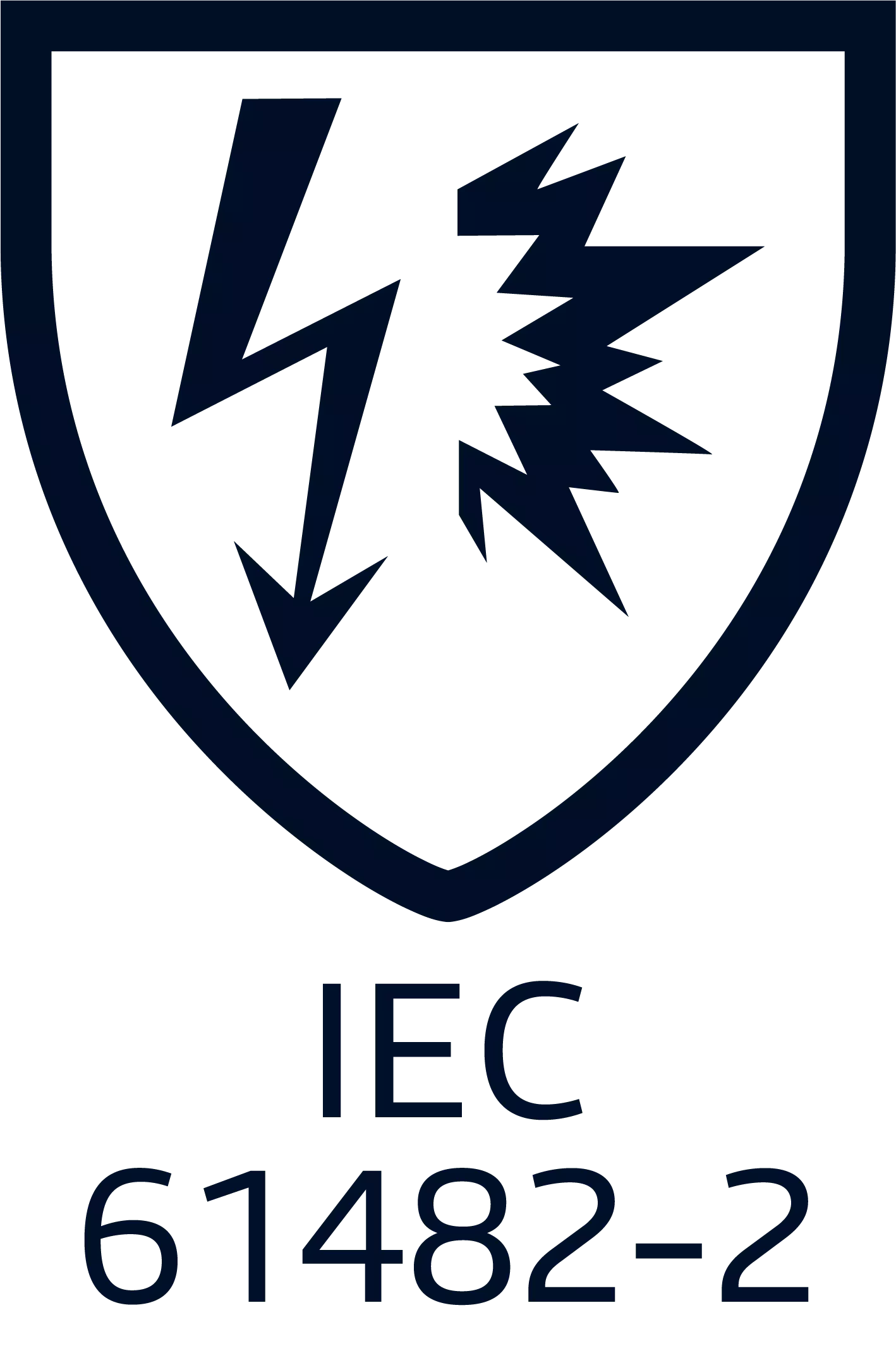Shanghai, China
+86-17317656853
inquiry@cgprotection.com



IEC 61482-2 – This standard specifies protection levels that garments and fabrics must meet when presented with arc flash. Protection levels may be used in conformance with the following standards: Open Arc IEC 61482-1-1, which records arc rating levels (ATPV or EBT) and Box Test IEC 61482-1-2 in Class 1 (4 Ka) and/or Class 2 (7 Ka).
EN IEC 61482-2:2020 supersedes IEC 61482-2:2009.
This part of EN 61482 specifies requirements and test methods applicable to materials and garments for protective clothing for electrical workers against the thermal hazards of an electric arc. Electric shock hazards and other effects like noise, light emissions, pressure rise, hot oil, the consequences of physical and mental shock or toxic influences are not covered by this standard. Protection of eyes, face, head, hands, and feet against electric arc hazard fall outside the scope of this standard.
EN-IEC 61482-2 includes two methods for testing. Garments can be certified according to one of the test methods or to both test methods.
1. EN-IEC 61482-1-1:2019 supersedes IEC 61482-1:2009 - "Open Arc Test Method" (used in the USA)
The Open Arc test method (ATPV test and garment test) determines the Arc Rating Arc Thermal Protection Value (ATPV level), ELIM (incident energy limit) or Energy Break Open Threshold (EBT) of flame-resistant material (Method A) and clothing (Method B). The basic principle is that the ATPV of the garment must be higher than the Arc Flash energy level as calculated. The "Open Arc" test method is the same as the original North American method for measuring the Arc Thermal Performance Value (ATPV) as used in ASTM F1959. The Arc Rating is expressed in cal/cm² (calories per centimetre square).
2. EN-IEC 61482-1-2:2015 - "Box Test Method" (used in Europe)
In the Box Test Method, materials and clothing will be tested using two methods: the material box test method and the garment box test method.
• The material box test method is used to measure and determine material response to an arc exposure when tested in a flat configuration. A quantitative measurement of arc thermal performance is made by means of the energy transmitted through the material. During this test, a fabric sample is exposed to an electric arc produced by a 4kA or 7kA short circuit. In this test, the arc does not last any longer than 500ms. The amount of heat transmitted through the sample is measured during and after the test. Based on the resulting data and a Stoll curve, the length of time it would take to cause the onset of second-degree burns is subsequently determined. Samples are also assessed for after-flaming, hole formation, melting, etc.
• The garment box test method is used to test the function of the protective clothing after an arc exposure (i.e., no heat flux will be measured). This test must be conducted on a complete garment. In doing this, the objective is not to determine the energetic value, but to assess the garment after exposure to an electric arc for defects in the seams, fastenings, and other closures.
APC1 (Arc protection class) protects against electric arc of 4kA (arc energy 168 kJ)
APC2 protects against electric arc of 7kA (arc energy 320 kJ)
• A garment must have at least an ELIM value of 3,2 cal/cm2 (130 kJ/m2), or else an ATPV or EBT value of 4 cal/cm2 (167.5kJ/m2) according to IEC 61482-1-1 or APC1 when tested according to EN IEC 61482-1-2
• Garments must be sewn with inherently flame-resistant threads
• If a garment has a higher rating of arc protection on the front than on the back, the garment’s torso, sleeves, and legs must be made using the arc-rated material; the back of the garment can have a lower arc rating
• Garments must have no exposed external metal (i.e., any internal metal or melting parts are to be covered inside to avoid contact with the skin)
• The garment label must show the lowest ATPV or class if the garment is comprised of different panels of material; more detailed information about areas of the garment with varying levels of protection may be provided on the garment’s label or in the manufacturer’s instructions pertaining to use
• The protective clothing material must have some minimum tensile, tear, and burst resistance and minimum dimensional stability (e.g., for wear and tear associated with cleaning)
• The garments must cover the entirety of the wearer’s body. For example, jacket and trousers must be worn together with other personal protective equipment (PPE), including a helmet with a protective visor, protective gloves, and protective footwear (i.e., work boots) to achieve the correct level of protection. Layering is very important and will increase protection (e.g., if you wear flame-resistant underwear beneath your flame-resistant garments, you are better protected).










© 2023 Shanghai C&G. All Rights Reserved.